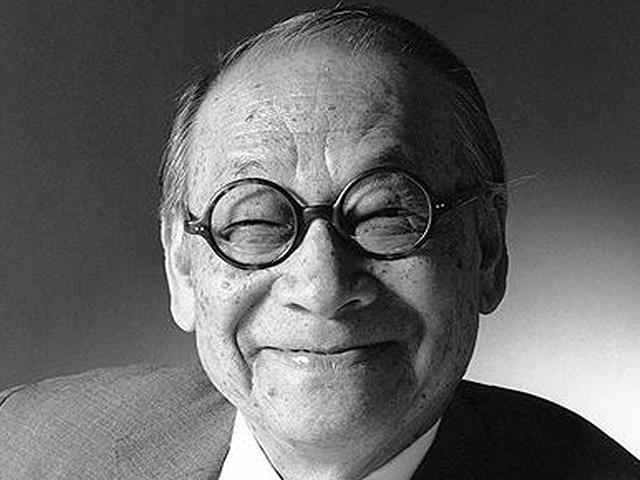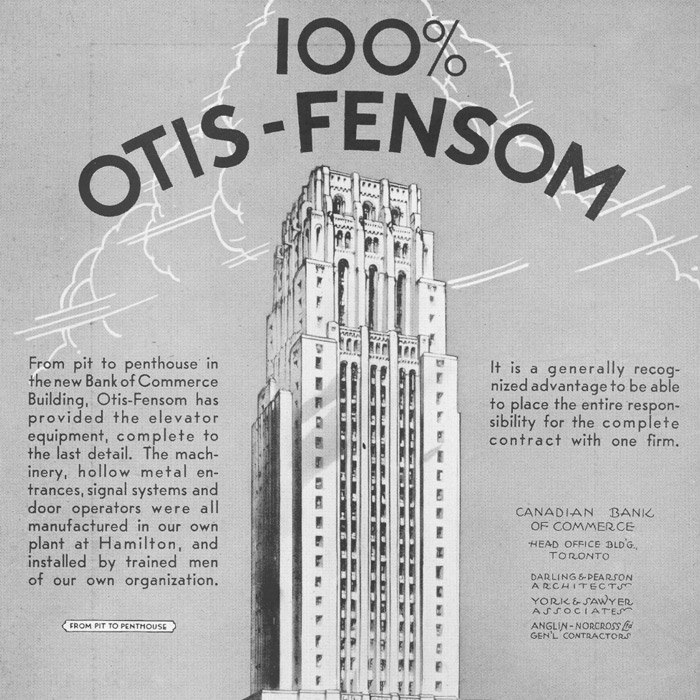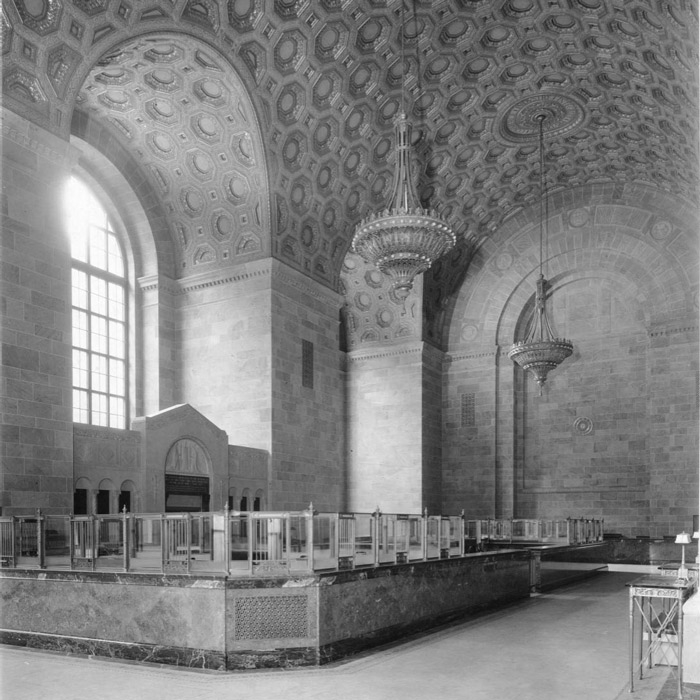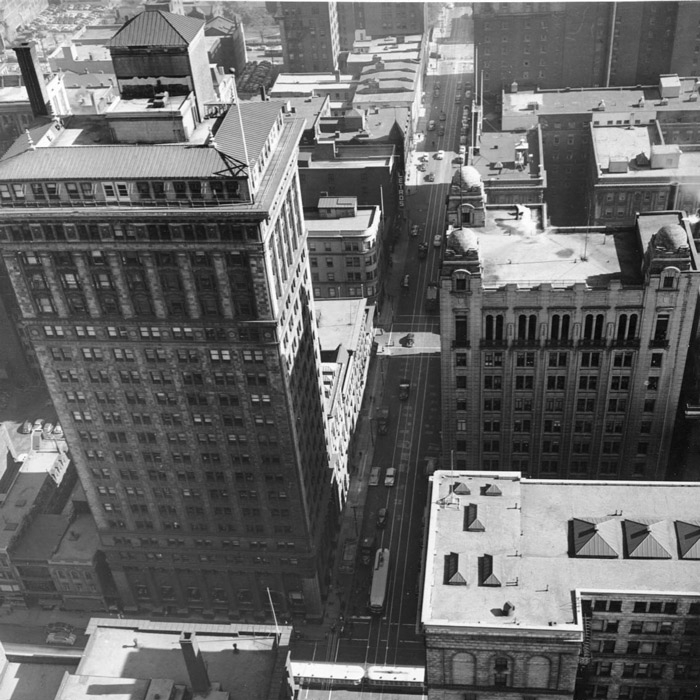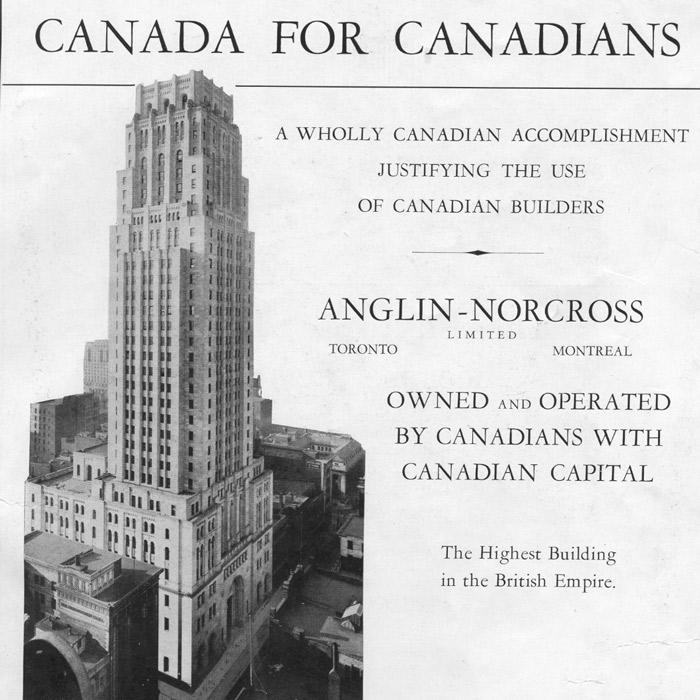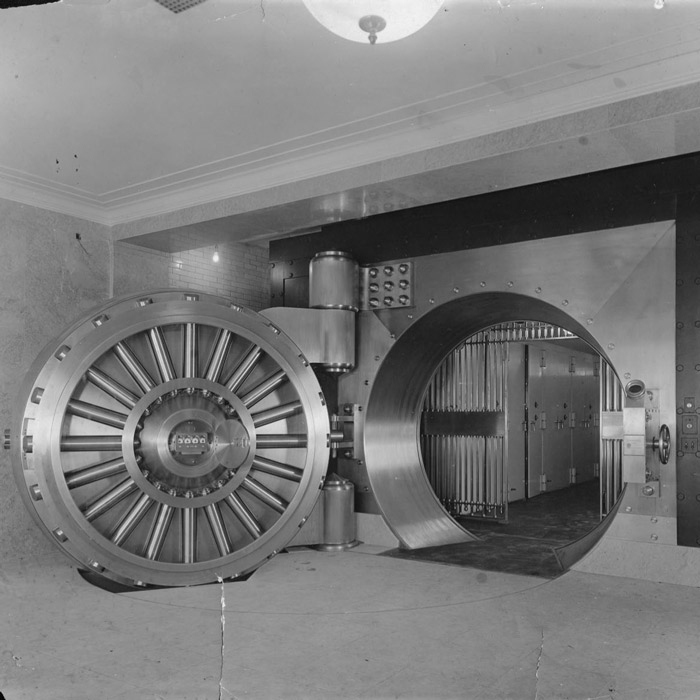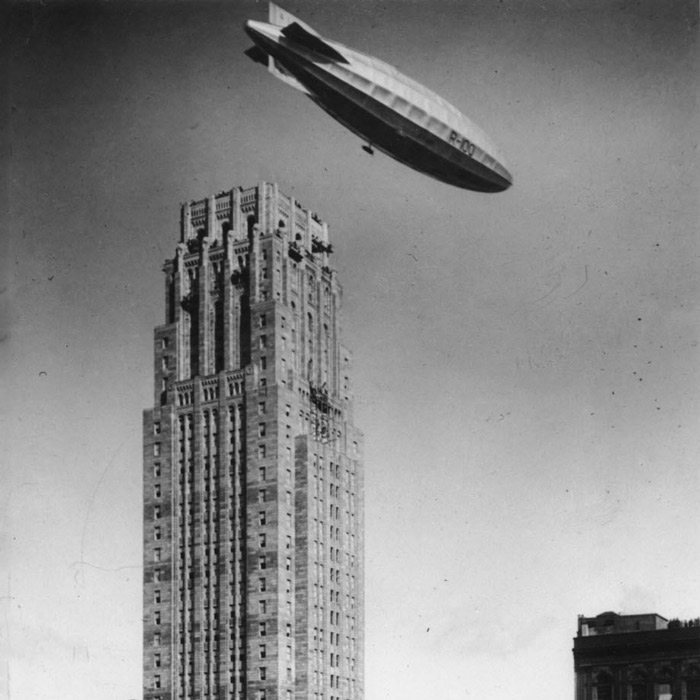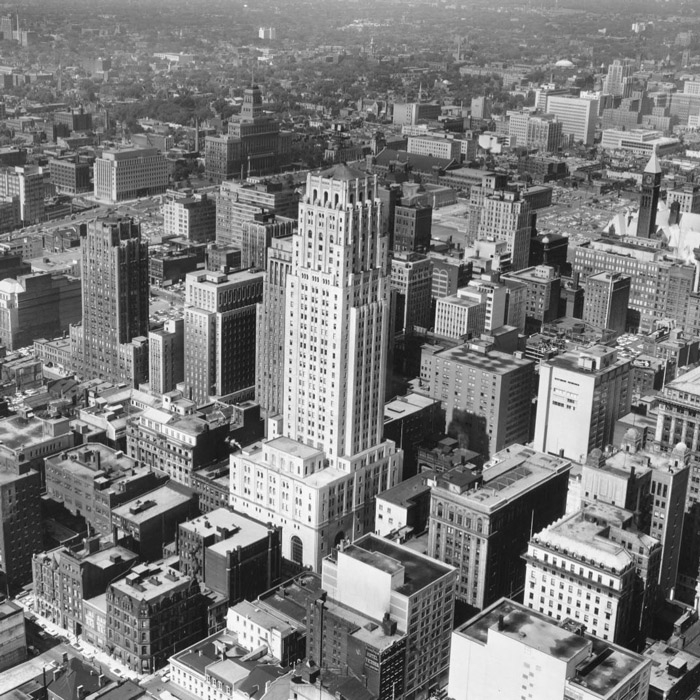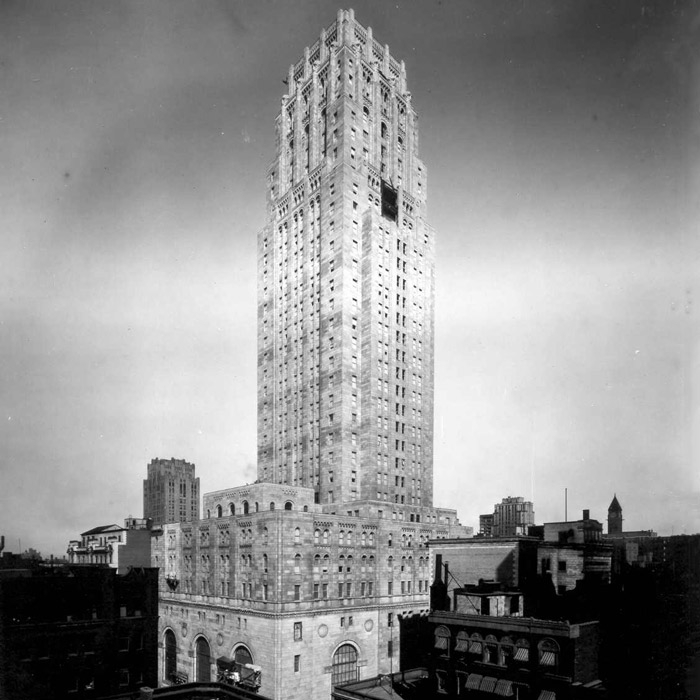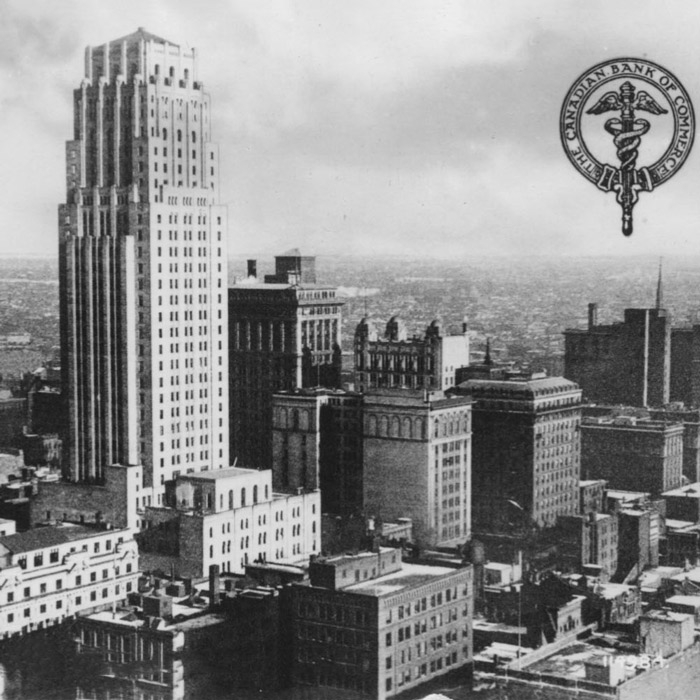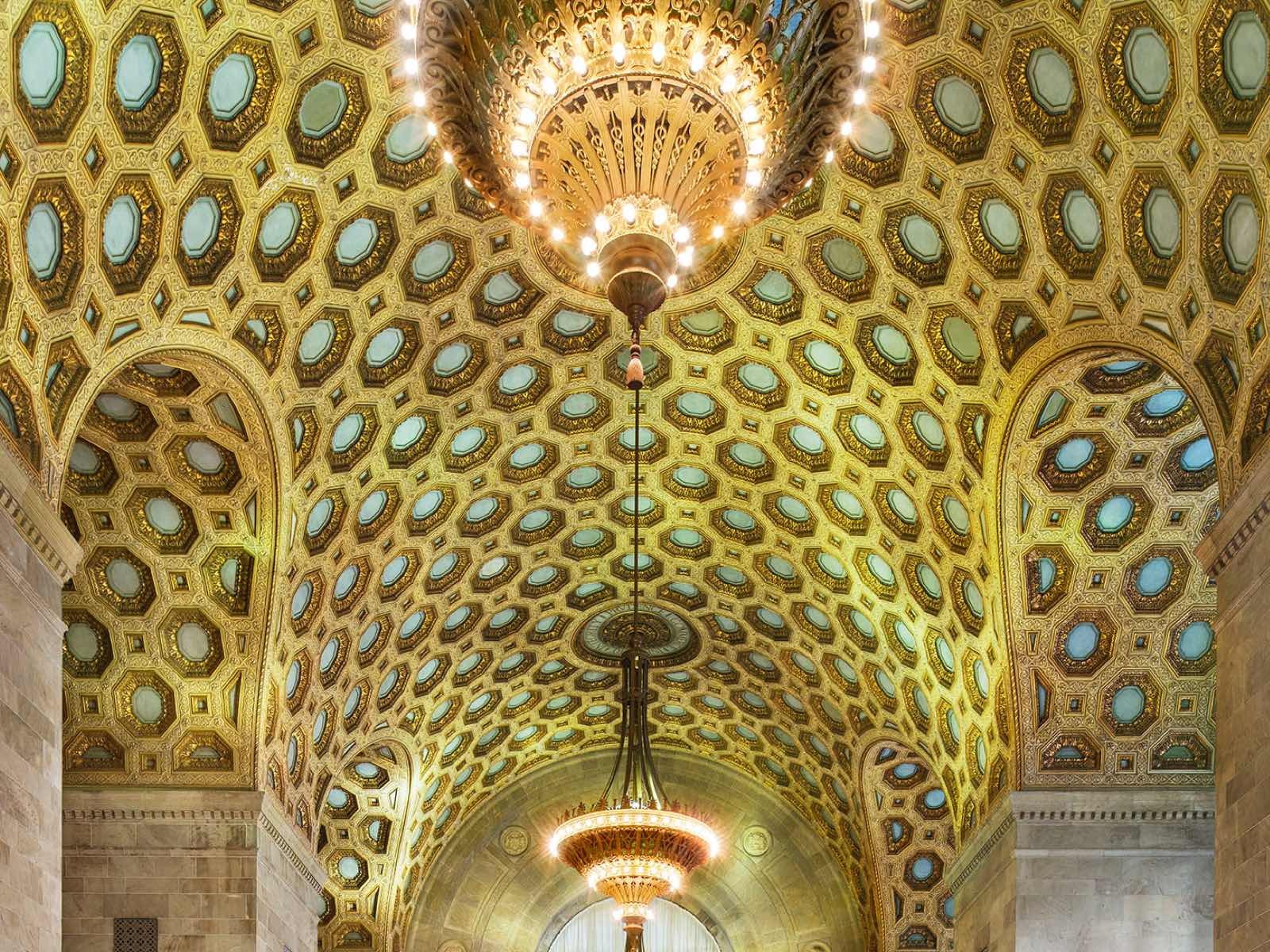

History
The Commerce Court complex opened its doors in the early 1970’s, but with the inclusion of Commerce Court North into the four-acre complex, its history reaches back to 1931. It’s hard to imagine today, but the 34-storey North Tower was the tallest building in the British Empire until 1962 and home to Canada’s business elite for a generation. It was designed by Pearson and Darling Architects of Toronto, with the help of U.S. design firm York and Sawyer. With its stunning vaulted gold-coffered ceiling and classic Art-Deco style, the North Tower was a showplace in its time, and today remains a treasured heritage building in Toronto’s financial core and a major component of Commerce Court.
When I.M. Pei’s four-acre, four-building vision was completed, it instantly changed the Toronto skyline and helped modernize the Financial District as we know it today. The new buildings combined modernist materials with traditional stone to create an integrated design that was in harmony with the original North Tower, introducing a modern vision for an emerging city. Commerce Court West, the largest of the four buildings, with its enduring imperial stainless steel exterior, remains a landmark property on Toronto’s skyline and to this day, is recognized around the world as one of I.M. Pei's most stunning, modernist creations.
To read more about both what blogTO has to say about the North and West Tower, click here.
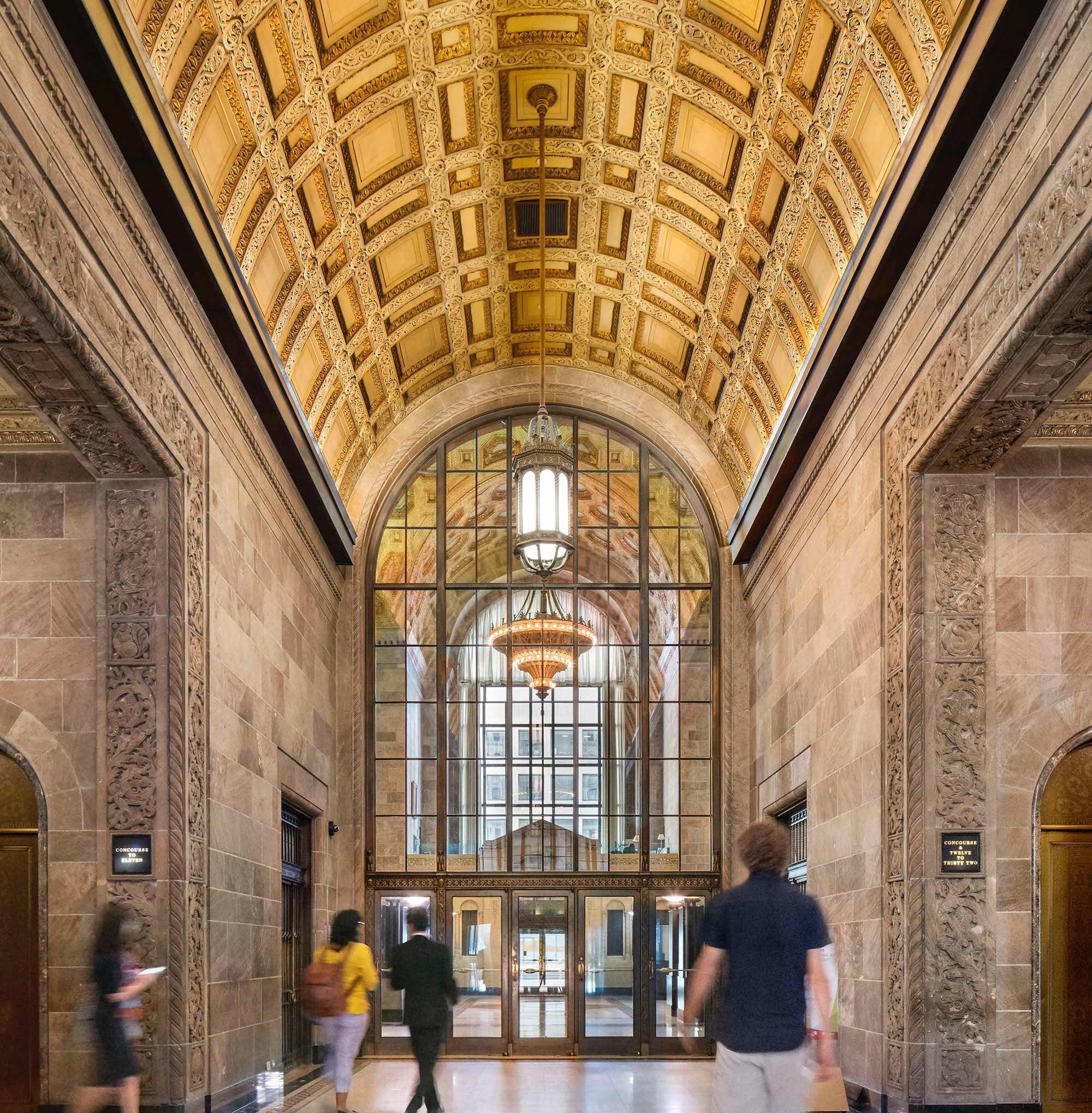
Architect
One of I.M. Pei’s most celebrated creations, Commerce Court West is more vital and relevant than ever. Its brilliant imperial stainless steel exterior, wide-open functional floors and large public spaces continue to inspire.
Ieoh Ming (I.M.) Pei, is regarded as the last master of high-modernist architecture. Born in Canton, China and educated in the United States at M.I.T. and Harvard University, Pei and his firm Pei Cobb Freed and Partners changed the face of architecture and in the process, many of the world’s most prominent cities. The recipient of numerous international awards over his career, Pei was awarded the prestigious Pritzker Architecture Prize in 1983. He is recognized for his great concern with function over theory, understanding that buildings must be designed for the practical needs of today and the unknown potential of the future.
The energy and beauty of Pei’s vision can be seen in the building’s bold, modern lines, but also in the many details that demonstrate his genius for space and his appreciation for the human element in architecture.
Some of I.M. Pei’s other celebrated projects include:
Musee d’Art Moderne, Luxembourg
Bank of China Tower, Hong Kong
The Pyramid, The Louvre, Paris
